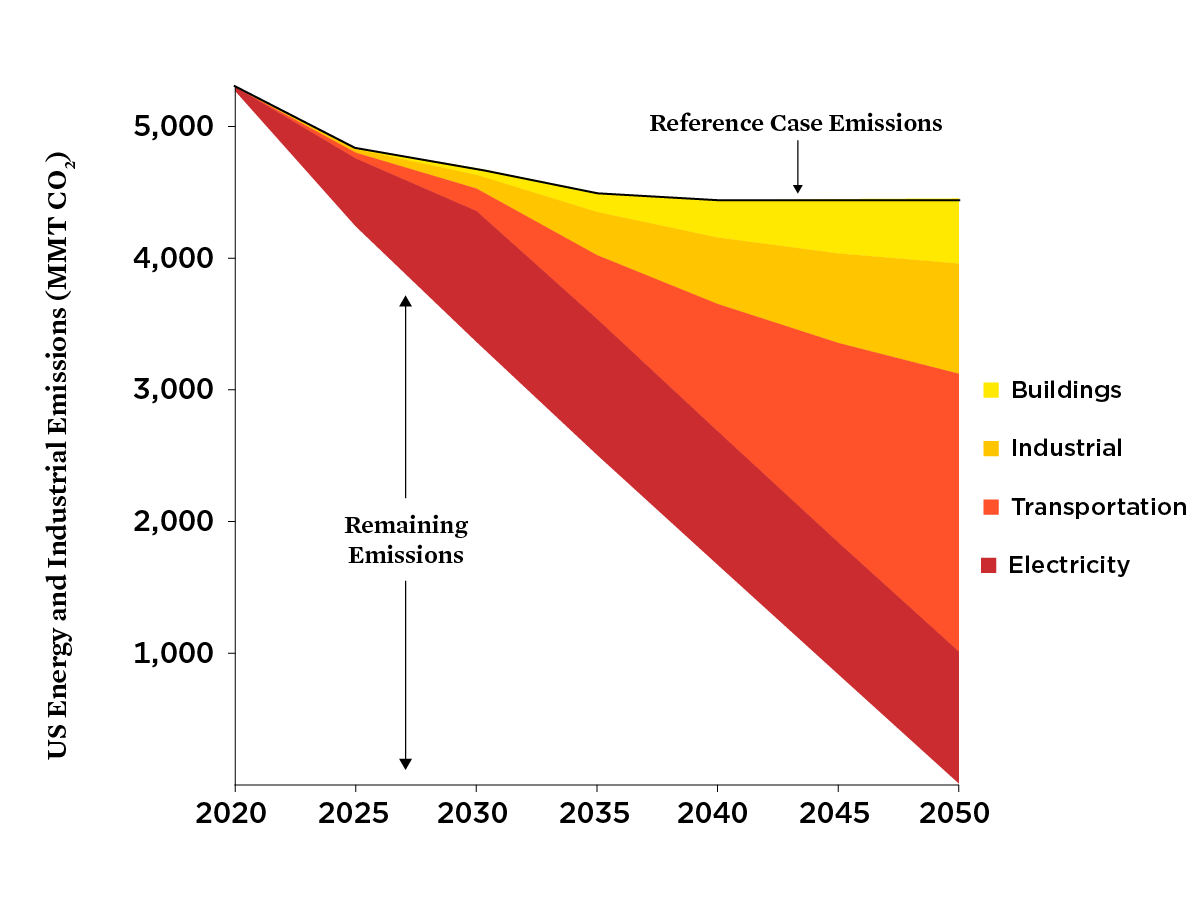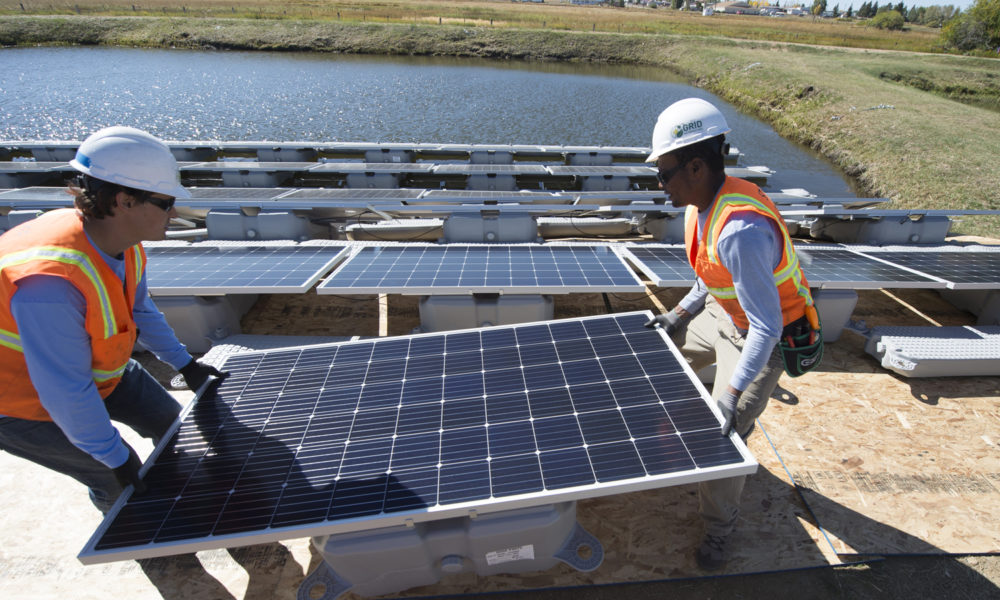The climate crisis is here, and we know we need to make deep cuts in heat-trapping emissions to limit the worst of future impacts. That can sometimes lead to a sole focus on techno-economic solutions to achieving deep decarbonization, which limits a fuller understanding of the challenges and the opportunities ahead. UCS and an advisory committee of external experts set out to take a different approach to wrestling with these issues, one that centers people—the people who use energy, the people who help supply it and the people who bear a disproportionate burden of the harms caused by our fossil fuel-based energy system—and recognizes the need for systemic changes. Today we released a report, A Transformative Climate Action Framework: Putting People at the Center of Our Nation’s Clean Energy Transition, outlining a framework for just and equitable clean energy transition that can help address past harms and maximizes benefits for workers and communities.
For additional perspectives from the author team, please see the Clean Energy Transformation series.
Our work together on this report is a small contribution to a rich conversation with multiple perspectives that is ongoing and gathering force. Environmental justice, civil rights and labor advocates have been leading the way, including through the Equitable and Just National Climate Platform, the BGA Solidarity for Climate Action platform and the National Economic Transition Platform, and through the work of the Partnership for Southern Equity and the NAACP among many others. Numerous community-based groups around the country, like Soulardarity are also working tirelessly to advance these priorities.
The imperative for transformational change
Our energy system provides critical services that form the bedrock of modern life, helping us cool and warm our homes, fueling our cars, and powering our industrial facilities. The workers who help produce that energy—coal miners, utility workers and others—draw their livelihoods from this system and provide a vital service.
And yet for too long we have failed to address the fact that burning fossil fuels creates air, water and soil pollution that harms public health and the environment. Moreover, because of structural racism and socioeconomic inequities, the toll of that pollution falls disproportionately on communities of color and low-income communities. The urgent need to address these long-standing injustices is now intersecting with the urgency of the climate crisis. And the solution to both is the same: transitioning away from fossil fuels to clean energy as rapidly as possible.
Making that transition in a way that ensures all communities and working people are treated fairly requires careful attention, systemic changes to our energy economy, and proactive policies and investments.
Principles for a transformative clean energy transition
In our report we propose three core principles for a transformative clean energy transition. It must:
- Effectively address the climate crisis. The transition to a low-carbon economy must be anchored in climate-relevant targets and timelines: cuts in heat-trapping emissions of at least 50 percent below 2005 levels by 2030 and net-zero economywide emissions no later than 2050, prioritizing direct, absolute emissions reductions achieved from deep cuts in fossil fuel use which will also guarantee reductions in other harmful co-pollutants.
- Advance equity and justice. Equity and justice require that all people are protected from environmental, climate, and economic harms that may present in our current energy system and as we transition away from it, and that they have equal access to decision making related to that transition. This is about both an outcome we must strive for, as well as a process for how to get there.
- Drive systemic, not just incremental, change. To rapidly decarbonize our economy in a people-centered way, we will need an accelerated and unprecedented shift to clean energy, as well as societal shifts that enable sustainable consumption, production, and development patterns. We will have to take on powerful fossil fuel interests and democratize the decisionmaking processes and the benefits produced by our energy system. Analyses and policies must go beyond the status quo and challenge market rules and structures that impede rapid and equitable deployment of clean energy.
Modeling a low-carbon energy system
We also undertook an economywide energy modeling exercise to analyze the technical and economic feasibility of multiple pathways to cutting carbon emissions, aligned with reductions of at least 50 percent below 2005 levels by 2030 and achieving net-zero emissions no later than 2050. These cuts are a minimum of what the United States must do to contribute to global efforts to meet the goals of the Paris Agreement.
Our analysis—which examined multiple pathways—shows that these deep cuts are feasible, but we must act quickly. These conclusions are broadly similar to those of recent reports, including from the National Academies of Sciences, the Natural Resources Defense Council , the University of Maryland Center for Global Sustainability, Environmental Defense Fund, Energy Innovation, America Is All In, America’s Pledge, MIT, Princeton University, Evolved Energy Research and Berkeley Labs. We found that major shifts are required throughout the economy, relying on solutions—primarily renewable energy, energy efficiency, and increased electrification of vehicles, building and industry—that are largely within our reach today. The costs of this transition are comparatively modest—and easily outweighed when compared to the benefits of improved health and avoided climate impacts.

The power sector is the linchpin of economywide reductions, with coal being phased out by 2030 and renewable electricity (primarily wind and solar power) reaching nearly 60 percent of the electricity mix by 2030 and 90percent by 2050 and widescale economywide electrification expanding the cleaned-up power sector’s reach. In the transportation sector, efficiency and electrification help reduce liquid fuel use by 20 percent by 2030, 60 percent by 2040, and more than 80 percent by 2050, and low-carbon alternatives to petroleum cut emissions from remaining liquid fuel use. Ambitious energy efficiency improvements combined with increased electrification of appliances and deployment of rooftop solar reduce direct emissions from fossil fuel use in buildings by 17 percent between 2020 and 2030 and 90 percent by 2050. Industrial sector emissions are significantly reduced primarily through a combination of energy efficiency, electrification, zero carbon fuels, and carbon capture and storage.
We also modeled a low energy demand scenario, as a proxy for systemic societal shifts that could lead to a lower overall need for energy—and therefore lessen the magnitude of remaining carbon emissions to be addressed and could potentially lessen the need for new energy infrastructure to reach climate goals. This kind of an approach has been pioneered by others including in research by Grubler et al; the IEA’s Sustainable Development Scenario, and research by KeyBer and Lenzen, Rocky Mountain Institute, and the American Council for an Energy Efficient Economy.
Beyond carbon, and the limits of modeling frameworks
Some of the most important insights in the report come from the implications of our modeling results that go well beyond what we could analyze within the modeling framework. By looking beyond carbon emissions reductions, we can anticipate challenges and unlock additional benefits for communities and working people.
For example, the shift from fossil fuels to renewable electricity and clean transportation will be a huge public health boon, especially for communities most exposed to harmful air, water, and soil pollution, from living near coal plants and refineries to highways and freight corridors. However, we must also plan for this shift and ensure we’re investing in a fair transition for fossil fuel workers and fossil fuel-dependent communities. And a sharp turn away from fossil fuels will also require taking on entrenched, powerful, and well-funded fossil fuel companies, utilities and their allies.
As another example, the rapid transformation of the power sector to one dominated by renewable electricity will require an unprecedented buildout of renewable resources, transmission, and energy storage, at a clip that will only be possible if we make changes to current market structures, governance, and rules. Those changes are also urgently needed to ensure people have access to clean, affordable, efficient and resilient energy resources. We also need to advance more public and community-based ownership models, so all communities can benefit directly. This kind of a multidimensional approach is critical so that our energy system meets people’s needs, and that people have the power to shape decisions and priorities in that system that directly impact their lives.
Because we have waited so long to act, we do face some imperfect choices; nevertheless a sharp turn away from fossil fuels, done right, will be hugely beneficial for people’s health and well-being.
A foundational framework and a vision for more to come
This research builds upon the good work that many others have done before us. It is an initial effort, and we look forward to building on this foundation in collaboration with others and as part of a broader community that is working to advance these important goals in other venues.
My colleagues and I are deeply grateful for the relationships we’ve built, and learnings shared by our coauthors, Shelley Welton, Monica Unseld, Chandra Farley, Ted Boettner, Jackson Koeppel, and Brett Isaac. What made our collaboration special was the melding of perspectives, ranging from community-based work in different regions of the country, to technical modeling, policy expertise and movement building advocacy. Doing this work together in a year when our country was experiencing a pandemic, a racial justice reckoning, an economic crisis, and an onslaught of climate-related disasters made it especially meaningful.
We have a tremendous opportunity—and an urgent imperative—to advance climate justice right now, and together we hope this work can contribute to furthering that goal.

